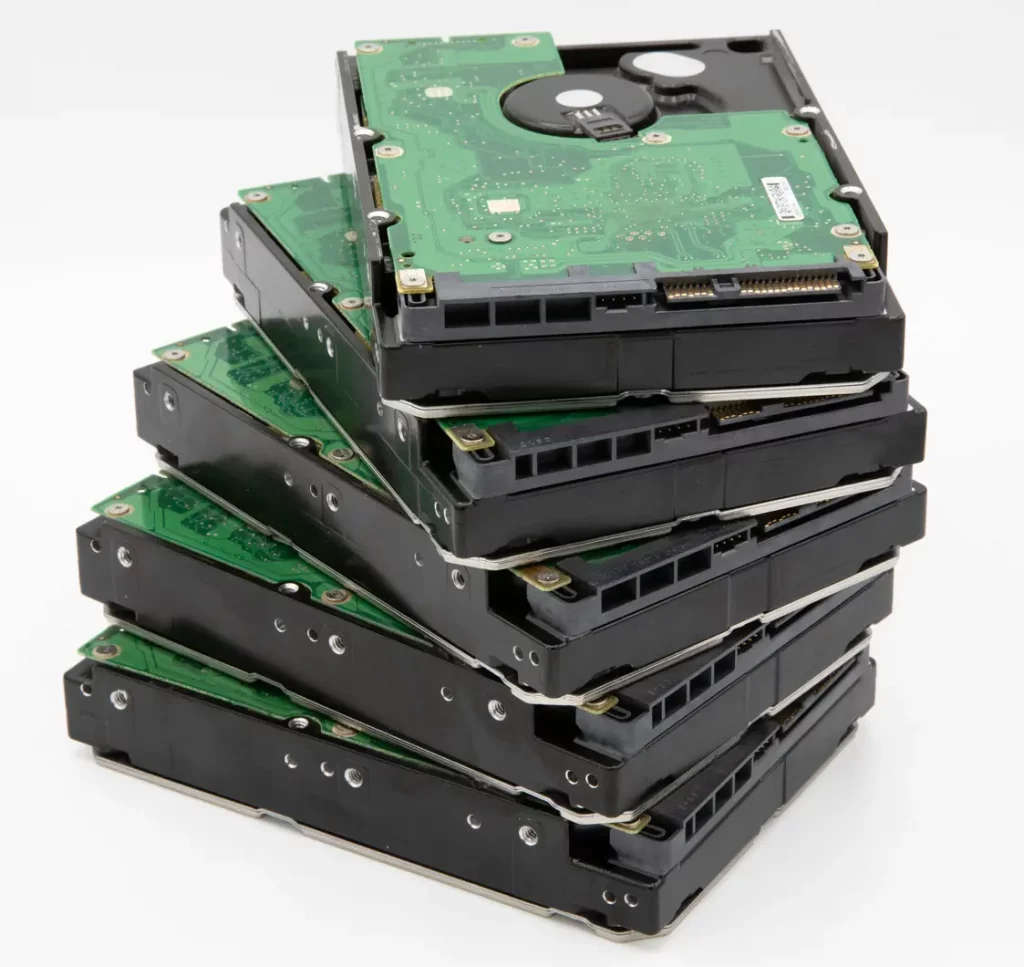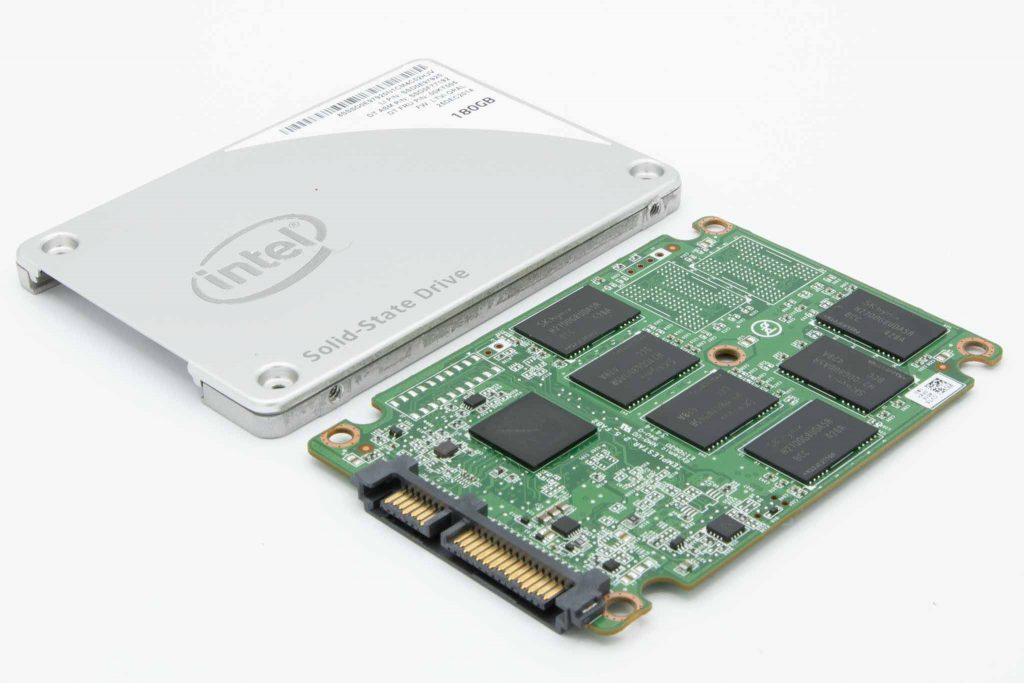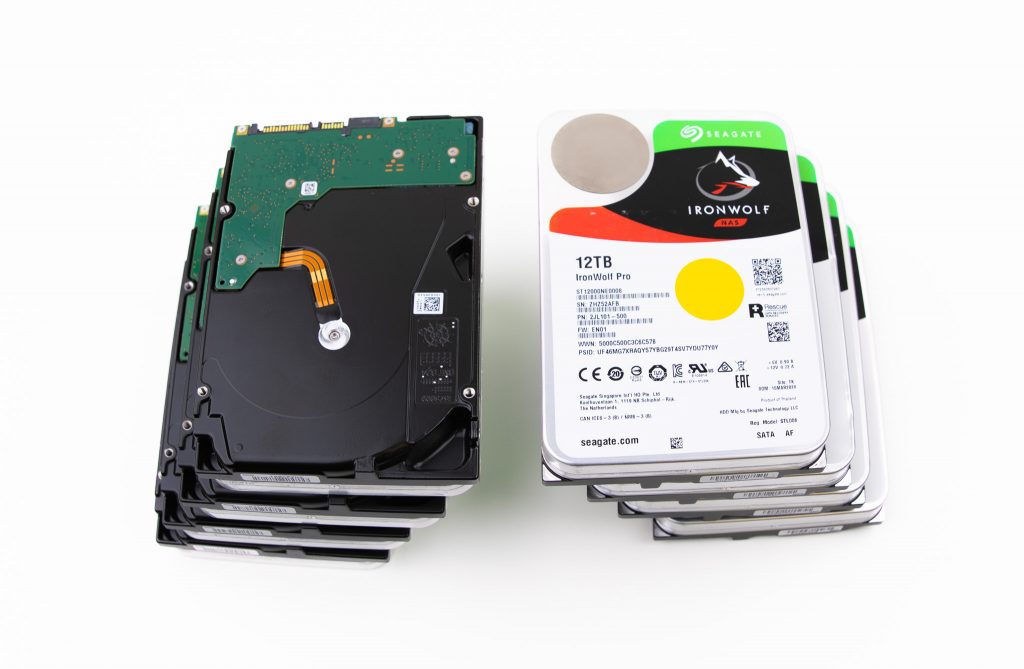ATA and SATA are two interface types utilized for connecting storage devices, including hard drives and SSDs, to computers. These interfaces enable seamless communication between the storage devices and the host computer.
While they serve the same fundamental purpose, they have several differences. We’ll compare them in various aspects. But before diving into comparison, let’s explore what is the meaning of them.
What is ATA and SATA
ATA
ATA, also called IDE (Integrated Drive Electronics), is an older interface standard introduced in the 1980s. It played a key role in early PC development, connecting storage devices such as hard drives and optical drives. ATA used parallel data transmission, transferring data simultaneously using multiple data lines.
The storage device connects to the computer’s motherboard through a 16-bit parallel connection. In a standard setup, it enables two devices per channel. ATA uses a master and a slave configuration, which permits a maximum of four devices.
SATA
SATA, short for Serial ATA, is a newer interface standard introduced in the early 2000s. It replaced older ones like Advanced Technology Attachment or IDE. SATA resolves limitations of the previous parallel data transmission method, resulting in better performance, cable management, and efficiency.
Using a serial connection enables faster data transfer rates than ATA, with speeds of up to 6 Gb/s. Each channel of SATA interfaces supports a single device. However, multiple SATA ports are available on most contemporary motherboards, allowing for the connection of several devices.

What are the differences between them
While they serve the same fundamental purpose, there are several differences. Let’s compare ATA and SATA in various aspects:
Technology and Architecture
ATA
Parallel ATA, also referred to by its common name, was a previous technology that linked storage devices with computers. Its transmission method was parallel, with data transfer occurring simultaneously through multiple data lines.
SATA
After the technology replacement of the ATA, the name became SATA. It uses a serial data transmission technique, transmitting data one bit at a time through a solitary data line.
Data Transfer Speed
ATA
PATA interfaces tended to have slower data transfer rates in the later years of their use. The fastest PATA standard, ATA-133, offered the maximum data transfer rate, was 133 MB/s.
SATA
Faster data transfer rates are possible by its interfaces. The first version of the SATA standard had a maximum data transfer rate of 1.5 Gb/s. Subsequent generations have increased the top rates to 16 Gb/s.
Cable and Connector
ATA
The connection between the motherboard and the drive in PATA utilized a broad and flat ribbon cable. It contains 40 or 80 conductors. The connector used was quite bulky and sizable.
SATA
A smaller, slim cable with an easily attachable connector used in it. This design enhances the airflow inside the computer case and makes cable management more straightforward.

Cable Length and Flexibility
ATA
The length of PATA cables has restrictions with signal degradation, usually around 18 inches (45 cm). Their rigidity could also impact the airflow and cooling within the computer case.
SATA
The length of its cables can span up to 1 meter or beyond with minimal signal loss. It is making them a more viable option. Additionally, they are thinner and more pliable, making cable organization more manageable.
Hot Swapping
ATA
PATA interfaces did not support hot swapping. So you had to power off the computer before connecting or disconnecting a PATA drive.
SATA
SATA interfaces introduced hot-swapping capabilities, allowing you to connect or disconnect its drives without powering off the computer.
Compatibility and Legacy
ATA
In order to connect newer drives to older systems, it may be necessary to utilize PATA drives or adapters.
PATA support is becoming less common in modern systems and motherboards due to its older technology.
SATA
Modern computers typically have SATA interfaces, which can work with newer drives more easily.
Connecting storage devices through SATA has now become the norm. Almost all contemporary motherboards and systems are compatible with SATA drives.
Electromagnetic Interference
ATA
Data errors could occur due to electromagnetic interference with PATA cables and connectors, making them more vulnerable than others.
SATA
The shielding on SATA cables is superior, making them less susceptible to interference and providing more dependable data transmission.
Pros and Cons
Here you can find a breakdown of the pros and cons of ATA (PATA) and SATA:
PROS of ATA (PATA)
Legacy Compatibility: Older systems are more likely to be compatible with ATA drives. It happens because ATA was the standard interface in the past.
Availability in Older Hardware: Older computers with PATA interfaces can benefit from using ATA drives for maintenance or upgrades.
Simplicity: ATA might be simpler to troubleshoot and work within certain scenarios due to its older technology.
CONS of ATA (PATA)
Slower Data Transfer: SATA is faster than ATA regarding data transfer rates. It means that accessing data on ATA can be slower and may lead to slower overall system performance.
Bulkier Cables and Connectors: The size and inflexibility of ATA cables can hinder airflow and create difficulties in managing cables.
Lack of Hot Swapping: Before connecting or disconnecting drives, it is necessary to power off the computer.
Limited Cable Length: ATA cable length has limitations due to signal degradation. Which could limit flexibility in arranging drives within the computer case.
Electromagnetic Interference: ATA cables are more susceptible to electromagnetic interference, leading to data errors and reduced reliability.

PROS of SATA
Faster Data Transfer: SATA interfaces supply higher data transfer rates than ATA, allowing quicker data access and overall system performance.
Cable Management: SATA cables possess smaller and thinner dimensions, which provide increased flexibility. This aspect makes cable management within the computer case easier and enhances the airflow.
Hot Swapping: SATA supports hot swapping, connecting, or disconnecting drives without turning off the computer.
Compatibility: It is the standard interface for modern computers, guaranteeing compatibility with diverse devices.
Reliability: SATA cables are better protected against electromagnetic interference, leading to more reliable data transmission.
Modern Technology: It is a more contemporary technology that benefits from advancements in manufacturing and design.
CONS of SATA
Limited Legacy Support: Some older computer systems may not support SATA interfaces. You may need to use adapters or PATA drives to make them compatible.
Higher Cost: Older or specialized systems may incur slightly higher costs when opting for SATA drives than their PATA counterparts.
To sum up, SATA has multiple benefits, like quicker data transfer, improved cable organization, and the ability to hot-swap. However, ATA can still be valuable for keeping older systems running and for its compatibility with legacy systems. SATA is the best choice for modern computers and systems because of its superior performance and features.
Frequently Asked Questions
Is ATA hard drive the same as SATA?
They are different regarding interface standards for connecting storage devices. ATA uses parallel data transmission and is an older technology. But SATA is a newer technology with faster data transfer rates and better cable management.
Is ATA SSD or HDD?
The older ATA interface is compatible with HDDs and SSDs. But modern drives usually utilize the SATA or NVMe interface for better performance and efficiency.
Is ATA compatible with SATA?
Motherboards may provide backward compatibility for their interface standards. Although connecting ATA drives to SATA ports may require adapters or converters.
Which is faster, SATA or ATA?
SATA’s serial data transmission method and higher data transfer rates are faster than ATA. This improved efficiency leads to quicker access to data when compared to the older parallel ATA technology.
